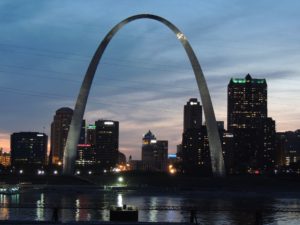
What to Look for in Your New St. Louis Neighborhood
The Gateway City is Missouri’s largest metropolitan area, with more than 300,000 people sprawled over 66 square miles. It’s a city as known for its performing arts as its pizza (think: cracker-like crust and Provel cheese, cut into squares), and it has recently started growing its significance as a medical and research hub as well. Tourists flock year-round to the Gateway Arch along the Mississippi River in downtown St. Louis, which, at 630 feet, is the tallest man-made monument in the Western Hemisphere.
But, as any large city, St. Louis has its good areas and its bad areas. Whether you’re new to the city or just aren’t sure how to choose which neighborhood will be best for your lifestyle and interests, consider these six factors during your home search.
Campuses
Among numerous smaller colleges, St. Louis has three major universities, each of them in a different area of the city. Student housing for Washington University is centered on the Delmar Loop in University City, while housing for St. Louis University is in Midtown and students of the University of Missouri–St. Louis are northwest of downtown, near Ferguson. If you’re hoping to be surrounded by a younger crowd, look to these areas first — but if you’re looking for fewer rentals and more quiet single-family homes, avoid being too close to these three campus areas.
School Districts
The first question many St. Louis natives ask each other when they meet is: “Where did you go to high school?” The city has a vast network of public, private, and parochial schools, all of which are distinctly tied to their neighborhoods. Whether you already have children or hope to have them soon, school districts should already be near the top of your list of considerations. Make sure your kids will get the best education they can in an environment they’re comfortable in. You can find testing statistics, reviews, and contact information for the best public and private K12 schools in St. Louis on the niche k12 website. Also consider setting up a time for you and your child to tour the nearby schools to make sure you find one that’s a good fit.
Property Taxes
The expense of the house itself is probably headlining your financial considerations during your home search, but there’s more to consider before finalizing the purchase. For example, you’ll be paying taxes on your home and the land it sits on, which adds up to a significant annual expense. Consult St. Louis tax rates for the neighborhoods highest on your list, and ask your real estate agent if they can give you any tips on areas of the city that have higher or lower taxes and the services that those taxes include.
Crime
Safety is everyone’s concern, renters and owners alike. The Metropolitan Police Department of St. Louis released a mapping tool to help residents keep track of local crime trends — what’s happening, and where it’s happening. Set a few filters and take a look at the neighborhoods you’ve been favoring to make sure you and your family will feel safe in your new home. Click here for the Crime Mapping Tool!
Recreation
You can only do so much in a backyard, even if it’s really spacious, so take a close look at the local parks and trails. St. Louis has more than 150 miles of trails weaving throughout the city and along the Mississippi riverfront, and more are underway. Plus, it’s home to one of the largest municipal parks in the country: At 1,293 acres, Forest Park is 500 acres larger than Central Park in New York City. If getting outside and staying active is important to you, consult a map of St. Louis parks and then check out a few in-person to see how well they’re maintained, how busy they are, and what amenities they offer. St. Louis is also home to the stunning 79-acre Missouri Botanical Garden, which is one of the oldest of its kind in the country, founded in 1859. You’ll find this scenic wonder in the Shaw neighborhood.
Eye Test
Regardless of every other perk of a neighborhood, or what the recent crime map looks like, visit your potential street at a few different times: during the weekend, during the week, and at night. Experience first-hand was the traffic looks like, what the neighboring yards and homes look like, and think about whether you feel safe and would be happy calling that place home. And remember: You can change a lot about a house, but you can’t change your neighborhood.
This article was provided my the team at ABODO St. Louis

